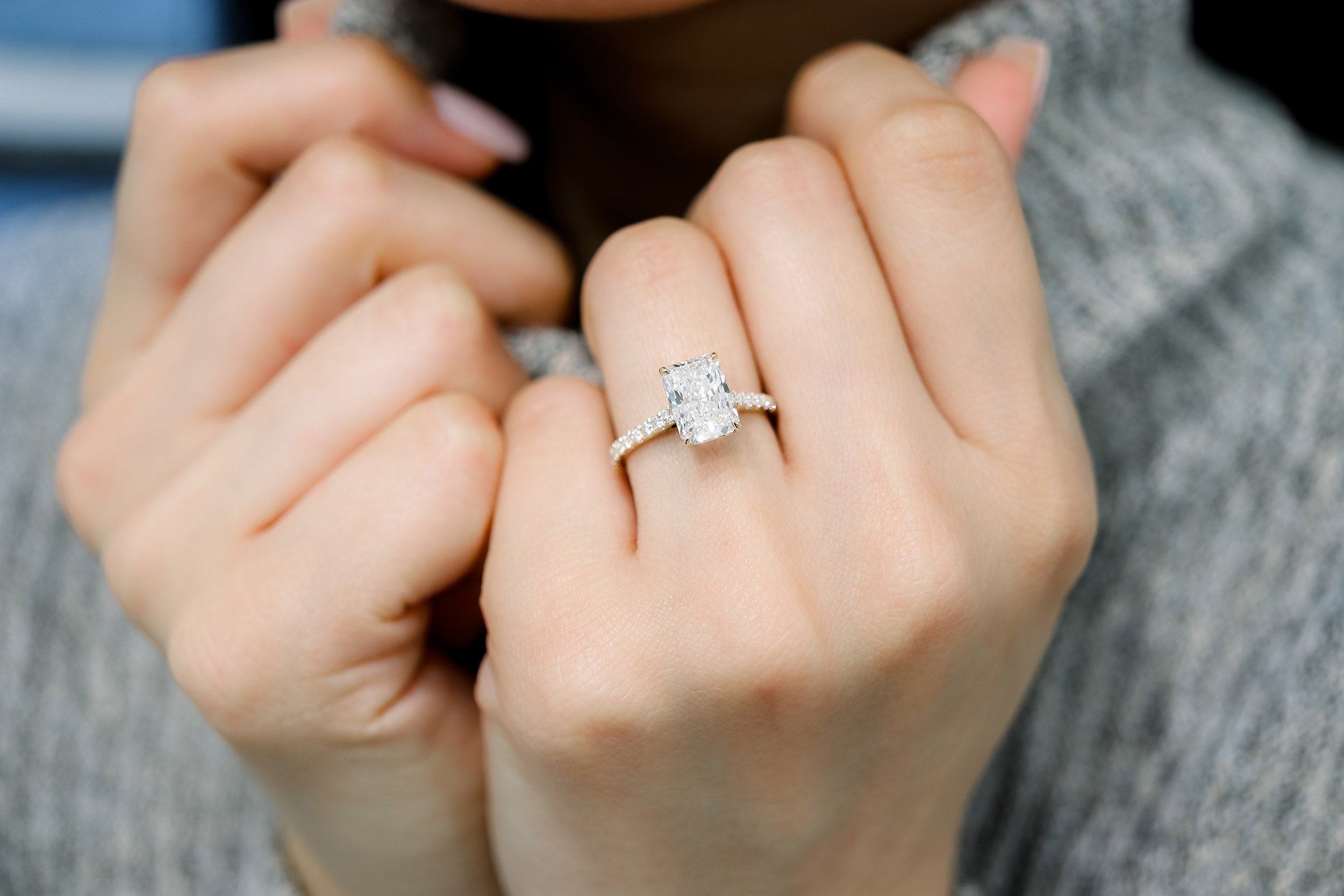The Sparkle of Sustainability: Exploring the World of Recycled Gold in Jewelry

In the glimmering world of jewelry, a new trend is taking center stage – recycled gold. Forget the traditional image of gold mining, with its environmental scars and ethical dilemmas. Today, a growing number of jewelry designers and consumers are turning to recycled gold in jewellery for its eco-friendly and socially responsible attributes. But what exactly is recycled gold, and why is it becoming such a hot topic in the industry?
What is Recycled Gold?
Imagine a beautiful piece of recycled gold in jewellery. Now, picture that its shimmering gold wasn’t freshly mined from the earth but instead crafted from recycled sources. That’s the essence of recycled gold – gold that has been repurposed from existing jewelry, industrial components, or electronic devices. Rather than extracting new gold through mining, recycled gold utilizes precious metal already in circulation, minimizing the need for further extraction and reducing environmental impact.
Environmental Impact of Traditional Gold Mining
The allure of gold has long driven humans to dig deep into the earth in search of this precious metal. However, the environmental consequences of traditional gold mining are profound. From deforestation and habitat destruction to toxic chemical pollution and carbon emissions, the toll on the environment is staggering. By opting for recycled gold, consumers can significantly reduce the demand for new mining operations, thereby mitigating these harmful effects.
Benefits of Using Recycled Gold
The advantages of recycled gold extend beyond environmental considerations. By choosing recycled gold jewelry, consumers also support ethical and social initiatives. Traditional gold mining often involves exploitative labor practices and human rights abuses, particularly in developing countries where regulations may be lax. Recycled gold, on the other hand, promotes transparency and accountability in the supply chain, ensuring that workers are treated fairly and ethically.
Quality of Recycled Gold
One common misconception about recycled gold is concerns regarding its quality and purity. However, recycled gold undergoes a rigorous refining process to remove impurities and meet industry standards. In fact, recycled gold can be of equal or even higher quality than newly mined gold, depending on the source and refining methods employed. Certifications such as Fairmined and Fairtrade Gold provide assurance of ethical and sustainable practices, further enhancing consumer confidence.
Process of Recycled Gold Refinement
The process of refining recycled gold involves melting down scrap gold and separating it from any contaminants or alloys. Advanced technologies are employed to ensure that the resulting gold meets purity requirements for use in jewelry production. Compared to traditional gold refining, which often involves harsh chemicals and extensive energy consumption, recycled gold refining offers a more sustainable alternative with lower environmental impact.
Cost Comparison: Recycled vs. Mined Gold
One of the common concerns surrounding recycled gold is its affordability compared to mined gold. However, the cost difference between the two is narrowing as more consumers demand sustainable options. While recycled gold jewelry may have been considered a premium product in the past, economies of scale and increased efficiency in recycling processes are driving prices down, making it more accessible to a broader audience.
Trends in Sustainable Jewelry
The rise of recycled gold is part of a larger trend toward sustainable and ethical practices in the jewelry industry. As consumers become more conscious of the environmental and social impact of their purchases, demand for eco-friendly products continues to grow. Jewelry brands that embrace sustainability not only attract environmentally conscious consumers but also contribute to positive change within the industry as a whole.
Brands Embracing Recycled Gold
Several forward-thinking jewelry brands have already embraced recycled gold as part of their commitment to sustainability. From small artisanal designers to established luxury labels, these brands are leading by example and setting new standards for responsible sourcing and production. By highlighting their use of recycled materials in marketing campaigns, these brands are not only appealing to eco-conscious consumers but also driving awareness and change.
Challenges and Limitations
Despite its numerous benefits, the adoption of recycled gold still faces challenges and limitations. Sourcing a consistent supply of recycled gold can be difficult, particularly for smaller-scale producers. Additionally, the infrastructure for recycling gold jewelry and electronic waste varies by region, impacting availability and scalability. Overcoming these obstacles will require collaboration between industry stakeholders and investment in recycling infrastructure.
Future Outlook
Despite the challenges, the future looks bright for recycled gold in jewelry. As awareness of environmental and social issues continues to grow, so too will the demand for sustainable alternatives to traditional gold. Innovations in recycling technology, lab created diamonds, and supply chain transparency are poised to further drive the adoption of recycled gold, making it the gold standard for responsible jewelry production.
Consumer Education and Awareness
Empowering consumers with knowledge is key to driving the adoption of recycled gold jewelry. By educating consumers about the benefits of recycled gold and providing transparent information about sourcing and production practices, jewelry brands can help consumers make informed purchasing decisions that align with their values. From recycled engagement rings to everyday accessories, every purchase has the power to make a positive impact.
Global Initiatives Supporting Sustainable Gold
On a global scale, initiatives aimed at promoting sustainable gold production are gaining momentum. Organizations such as the Responsible Jewellery Council and the Alliance for Responsible Mining are working to establish standards and certifications for ethical and environmentally responsible gold sourcing. By encouraging collaboration between industry stakeholders and fostering transparency in the supply chain, these initiatives are driving positive change and paving the way for a more sustainable future.
Conclusion
In conclusion, recycled gold represents a shining opportunity for the recycled gold in jewellery to embrace sustainability and ethical practices. By choosing recycled gold jewelry, consumers can enjoy the beauty and luxury of gold while minimizing environmental impact and supporting ethical supply chains. As awareness grows and demand continues to rise, recycled gold is poised to become the standard for responsible jewelry production, ensuring a brighter and more sustainable future for generations to come.



.jpg)

